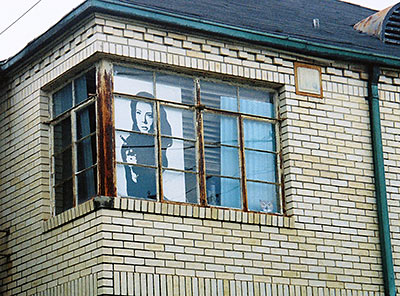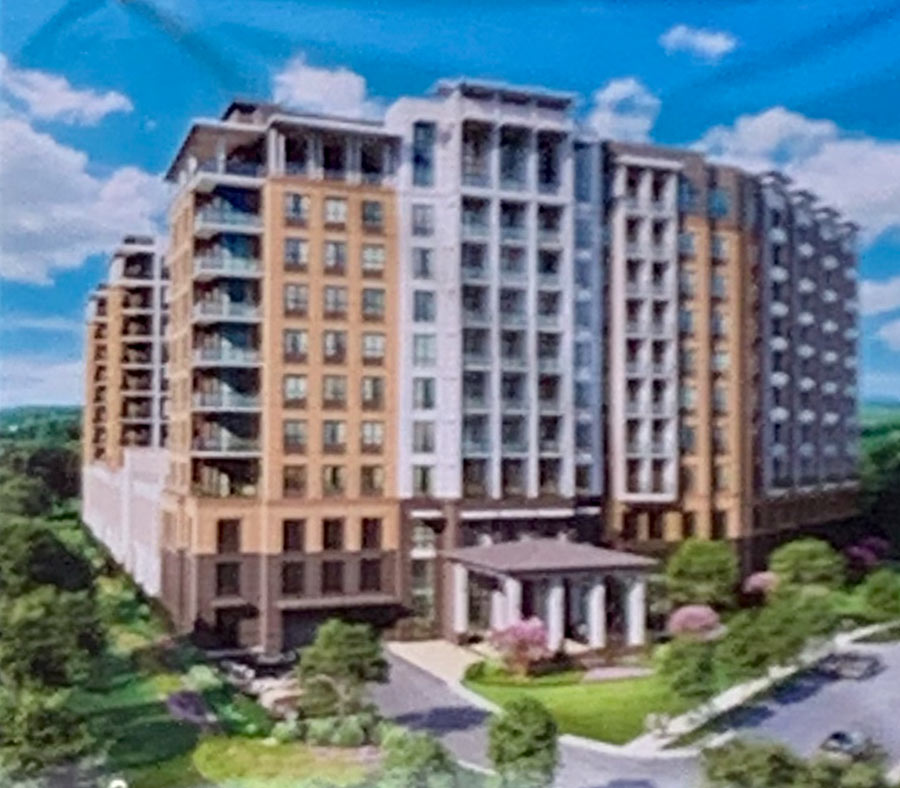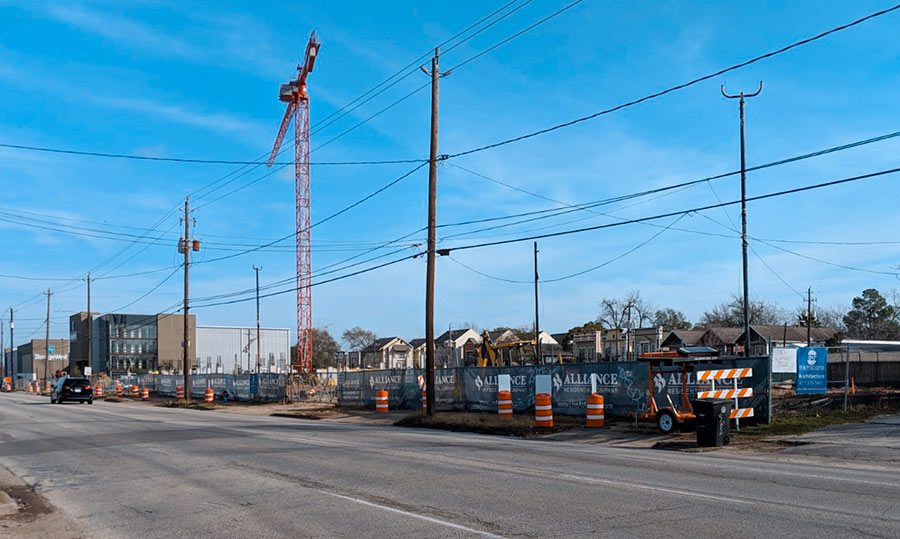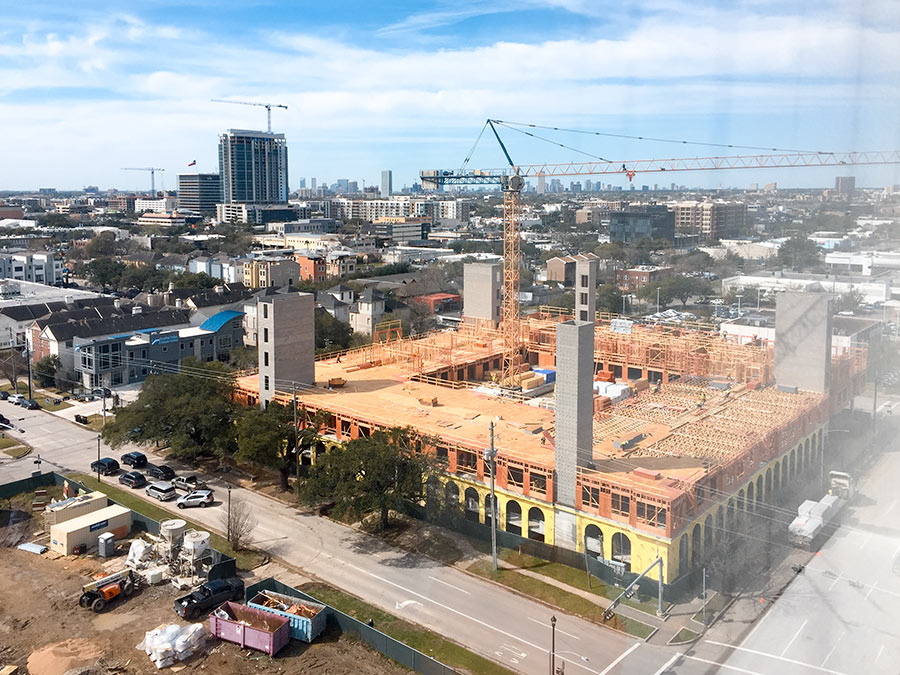
Swamplot has been covering the whole sorry Wilshire Village debacle since longtime tenants of the decrepit 1940 garden apartment complex at the corner of West Alabama and Dunlavy received a rather curious eviction notice early last year. You can find all our posts on the topic — in reverse order — starting here. But even Swamplot readers haven’t heard the full story of Wilshire Village. It’s now become apparent that — as compelling and absurd a plot as the whole soap opera has seemed to follow — a whole ’nother equally gripping drama was taking place behind the scenes.
Since our last post on the subject earlier this week, a whole bunch of new documents have appeared covering what appears to be an ongoing legal battle over the property between Matthew Dilick and Wedge Real Estate Finance. And they’re all available online here. (Click on the “documents” button to see them — but you’ll need to sign up for a free account to get access.) Frankly, we need your help to sift through all the paperwork and figure out what really happened. There’s a lot to look through, but we’ve already discovered some rather startling details, which we’ll be reporting on soon.
If you’ve got legal training, or just fancy yourself an armchair courthouse sleuth, we’re happy to receive any document summaries or commentary you can send us. But what we’d really like to assemble is a definitive timeline of events. And that’s the format we’d prefer to receive your submissions in: A date, an event, and a specific reference to the document that confirms it.
What’ll it all add up to? Maybe a better picture of the secret real-estate history of one large Inner Loop site in Houston. Maybe — more. Who knows? But we can’t see what the jigsaw puzzle shows until we find all the pieces and fit them together. Can you help?
Photo of apartment at Wilshire Village (now demolished): Katharine Shilcutt





There was an order of non-suit and it appears a final judgement in favor of Wedge Group on February 8th but then on February 10th there was another order signed by the administrative judge transferring the case to another court – so one must asumme the lawsuit has not been dropped. Or settled.
One curious thing is the order of the 8th in which the foreclosure is allowed. I thought once in bankruptcy only a federal court could approve or deny a foreclosure.
Something odd going on, that’s for sure.
Does anyone know whether this lawsuit is on or off? The indication is it is still on.
One interesting thing is that the Chronicle seems to be ignoring the story. Wonder why.
The Chronicle has historically been a mediocre paper at best and local stories, especially about the Council and its proceedings have been few and far between.
I’m surprised it still exists.
http://www.chron.com/disp/story.mpl/metropolitan/6867531.html
As you read this you realize something really stinks about Wilshire Village and what stinks the most is Bill White.
The Wilshire Partnership agreed to a settlement that included entering an agreed judgment. They failed to get the judgment entered and Wedge asked the court for relief. The reason it got transferred is probably because the partnership filed a nearly identical suit last summer and dismissed it with prejudice. I suspect that this went back to the court that had jurisdiction over the first claim.
This is the 5th time Wedge has tried to foreclose. The simple facts are that the partnership took out a $13 million dollar loan secured by the property in 2006. Remember those plans for a high rise? Hotels? Mixed use? None of it happened, the credit markets froze, and the partnership was stuck without development or a buyer, a property that generated very little if any income, and no money to pay their note. And when they couldn’t pay their note, the holder of the note foreclosed to get its debt paid. The simple fact is that if the partnership could pay its debt, none of this would be at issue.
I love a good conspiracy as much as the next guy, but I think this is a simple story about a developer that borrowed too much and got burned by the market. Bill White, Wedge, and Amegy didn’t make this transpire, the Wilshire Partnership did.
Bill White, Wedge, and Amegy didn’t make this transpire, the Wilshire Partnership did.
___________________
Well maybe not the foreclosure but everyone is still pretty amazed at how quickly the city moved in and redtagged and then condemned Wilshire Village. Within a week. While there are other properties sitting around for 1,2,10 and in one case 20 years which are in far worse condition than Wilshire Village was and yet are still there. And Wilshire Village? No longer there. You don’t need to put on a tin hat to wonder. It’s pretty obvious someone pulled strings.
I think the difference is that Dilick probably called the city and notified them that his property was a fire hazard, and actively sought the demolition of the buidlgins. He started evicting people in 2/08, and then got the fire marshall to designate it a fire hazard and post a notice to vacate of 3/20/09. It’s one thing when the city delays demo of abandoned buildings with absentee owners, another thing altogether when the owner notifies the city of potential dangers at his property in an effort to get it condemned.
The first effort at foreclosure was in 7/08. Who knows how long the partnership had been delinquent before that. And who knows how long the partnership had been working behind the scenes to get the property condemned.
It’s clear from the suit that the partnership defaulted and to avoid foreclosure needed to sell the property or take affirmative steps to sell the property (demo) to forestall the foreclosure. The eviction notices got the ball rolling, and asking the fire marshall to condemn their own property (imagine the black eye if the city fails to act quickly when an owner notifies them his apartments are a fire trap)sealed the deal.